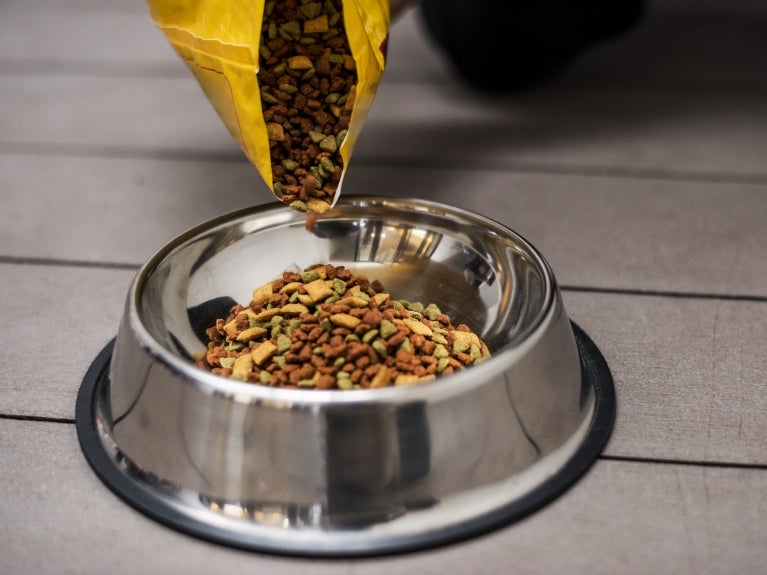FDA and AAFCO Updates for Animal Food Ingredient Oversight

FDA’s Center for Veterinary Medicine (CVM) recently announced the upcoming expiration of its longstanding Memorandum of Understanding (MOU) with the Association of American Feed Control Officials (AAFCO).
This MOU—which has been in place for nearly two decades—will expire on October 1, 2024, heralding a significant shift in oversight for animal food ingredients. FDA has released documents regarding the transition period after expiration of the MOU. More specifically, FDA released two draft guidances on August 8, 2024, along with a Request for Comments on its pre-market animal food ingredient review programs.
The two draft guidances are: (1) FDA Enforcement for AAFCO-Defined Animal Feed Ingredients (GFI #293), and (2) Animal Food Ingredient Consultation (AFIC) (GFI #294). The agency’s related Request for Comments (RFC) seeks stakeholder feedback on questions specific to the agency’s Food Additive Petition (FAP) and Generally Recognized as Safe (GRAS) Notification programs in an effort to help the agency determine what changes, if any, may be needed to facilitate an improved path to market for new animal food ingredients. FDA requests stakeholder feedback on the two draft guidances by September 9, 2024, and on its RFC by December 9, 2024.
Importantly, as noted in GFI #294, CVM intends to create an interim pathway for animal feed ingredients such that animal feed ingredient developers may consult with CVM once its MOU with AAFCO expires and during the period in which CVM assesses its animal FAP and GRAS Notification program in consultation with stakeholder feedback to be received in the coming months.
CVM’s Draft Guidances
GFI #293: FDA Enforcement for AAFCO-Defined Animal Feed Ingredients
At a high level, GFI #293 explains how CVM plans to regulate AAFCO-defined feed ingredients after expiration of the MOU.
As background, under the soon-to-expire MOU, AAFCO has maintained definitions of a range of animal feed ingredients as set out in its Official Publication (OP). AAFCO and CVM have worked together to review stakeholder requests for both new animal feed ingredients and requests to modify existing animal feed ingredient definitions. Under this approach, CVM has focused its review on the safety and suitability of the animal feed ingredients for the proposed intended use(s).
GFI #293 states that FDA will generally exercise enforcement discretion with regard to animal feed ingredients that are currently listed in the “Official Common or Usual Names and Definitions of Feed Ingredients” section of chapter six of the 2024 AAFCO OP, but that are not otherwise authorized as a food additive by FDA. This enforcement discretion extends to animal feed containing such unapproved food additives.
CVM writes that its enforcement discretion will generally apply if the following criteria are met:
- The ingredient is listed in the 2024 AAFCO OP.
- The ingredient is used according to the intended use, specifications, and limitations in the OP or, if there are no specifications or limitations on the ingredient’s use, used in accordance with good feeding practice as defined in 21 C.F.R. § 582.1(b).
- FDA does not have any questions or concerns regarding the safety of the ingredient.
CVM also plans to exercise enforcement discretion with regard to the common or usual names for animal feed ingredients. More specifically, per GFI #293, CVM plans to exercise enforcement discretion if an animal feed label bears the name of an ingredient that is included in the “Official Common or Usual Names and Definitions of Feed Ingredients” section of chapter six of the 2024 AAFCO OP—even if the name is not considered the common or usual name under FDA requirements. The exception here would be if use of the OP name caused FDA to view the label as false or misleading.
GFI #294: Animal Food Ingredient Consultation
Following the expiration of the MOU, CVM plans to assess its animal FAP and GRAS Notification programs to determine if changes are needed to promote the efficient development and review of new animal food ingredients. During this evaluation period, CVM is proposing to utilize an interim AFIC process to assess ingredients that may have otherwise been evaluated through the AAFCO ingredient definition process. To be clear, and as described in GFI #294, the AFIC process will differ from the current AAFCO ingredient definition process and, as such, merits careful review.
CVM specifies that interested companies should submit administrative, safety, environmental, and ingredient-related materials—some of which are intended to be posted in an online inventory—to Animalfood-premarket@fda.hhs.gov.
CVM also clarifies that the agency does not intend to enforce against any ingredients, or animal and pet food containing the ingredients, that are the subject of a “consultation complete” letter and there continue to be no questions or concerns regarding their safety.
In the short term, CVM will accept AAFCO Feed Ingredient Definition requests for consultation from AAFCO’s investigators until September 1, 2024.
Request for Comments: Pre-Market Animal Food Ingredient Review Programs
Following the expiration of the MOU, and as noted above, CVM intends to evaluate its animal FAP and GRAS Notification programs for pet food and animal feed ingredients. The agency seeks input on the following six questions relevant to oversight of animal food ingredients:
- What do you perceive as barriers and/or benefits to pursuing a Food Additive Petition or GRAS Notification?
- Are there changes that could make the Food Additive Petition and GRAS Notification programs more feasible, such as regulatory changes, changes to guidance, or changes to FDA policy or processes?
- Is there information that is currently required to be submitted in a Food Additive Petition or GRAS Notification that you do not think is necessary for evaluating the ingredient?
- Is there information that is not currently required to be submitted in a Food Additive Petition or GRAS Notification, but should be to better enable FDA’s evaluation?
- What review process for proposed animal food ingredients would best enable FDA to review their safety?
- If you have submitted a request for an ingredient definition through the AAFCO ingredient definition process, what was your reason for doing so instead of filing a Food Additive Petition or submitting a GRAS Notification with FDA?
Next Steps
We encourage companies to contact us if they would like to submit comments, have any questions regarding the expiration of the MOU and shift in oversight, or would like to submit an animal feed ingredient request through AAFCO in light of the tight timeline.
© 2024 Perkins Coie LLP

